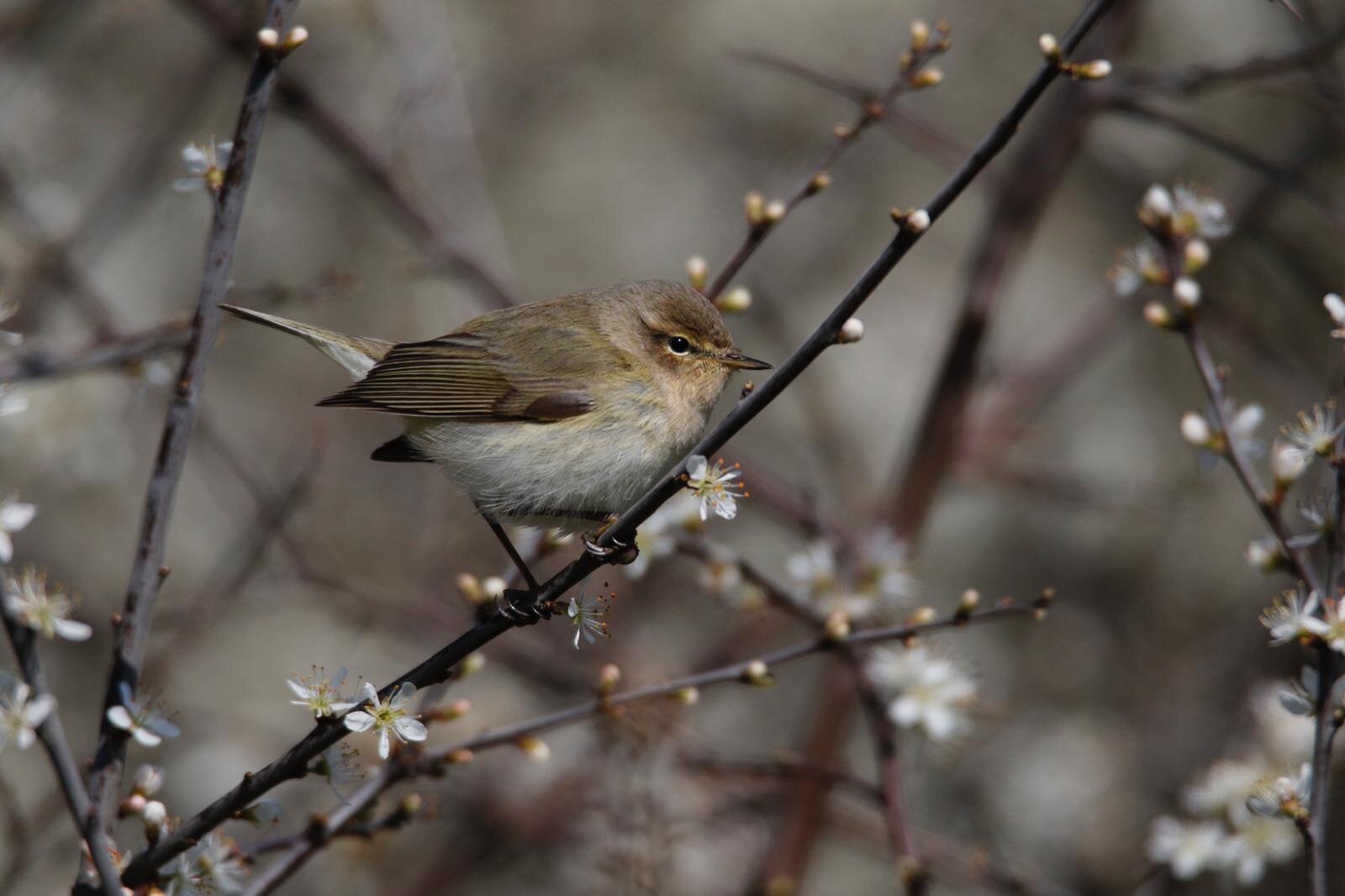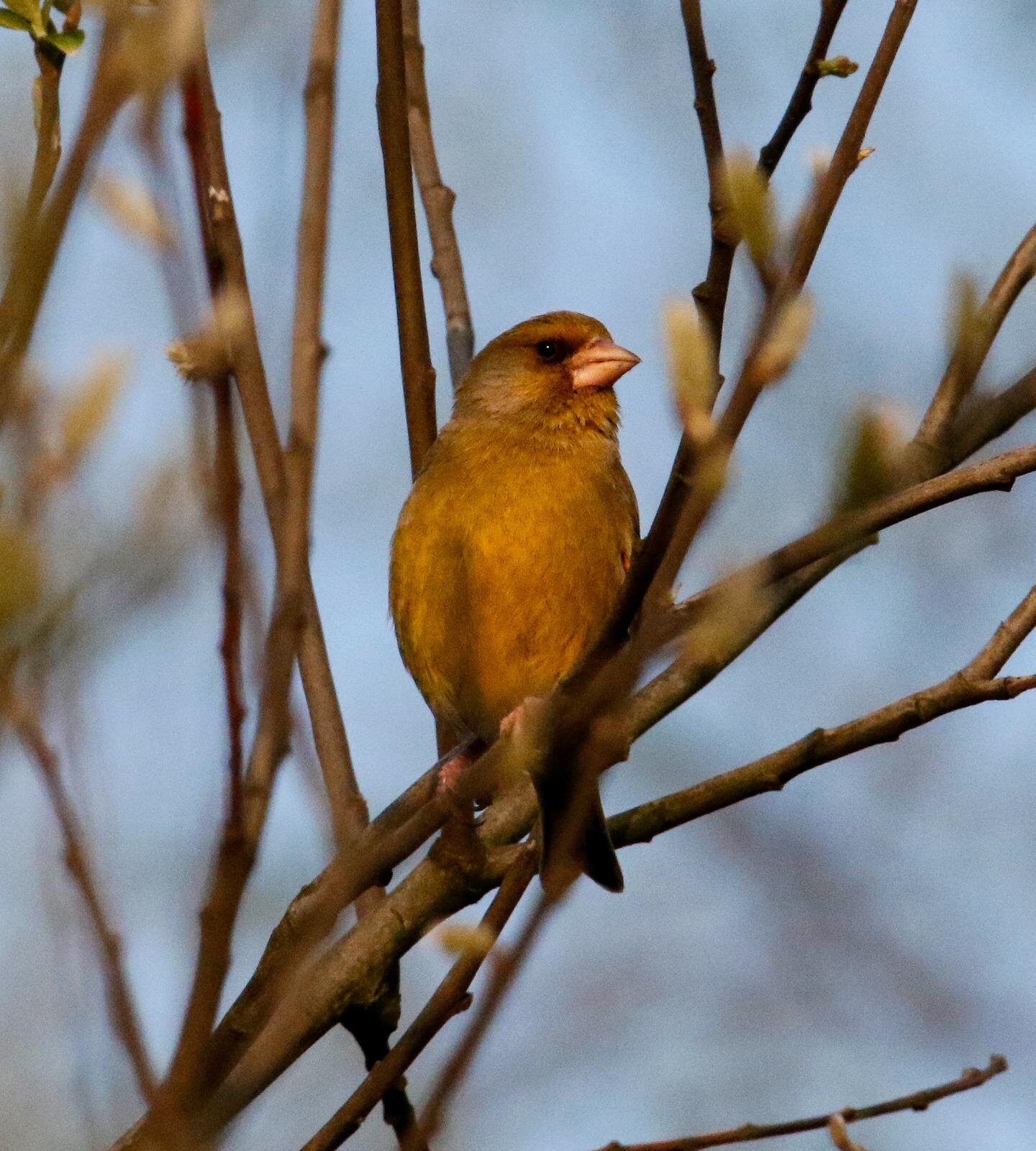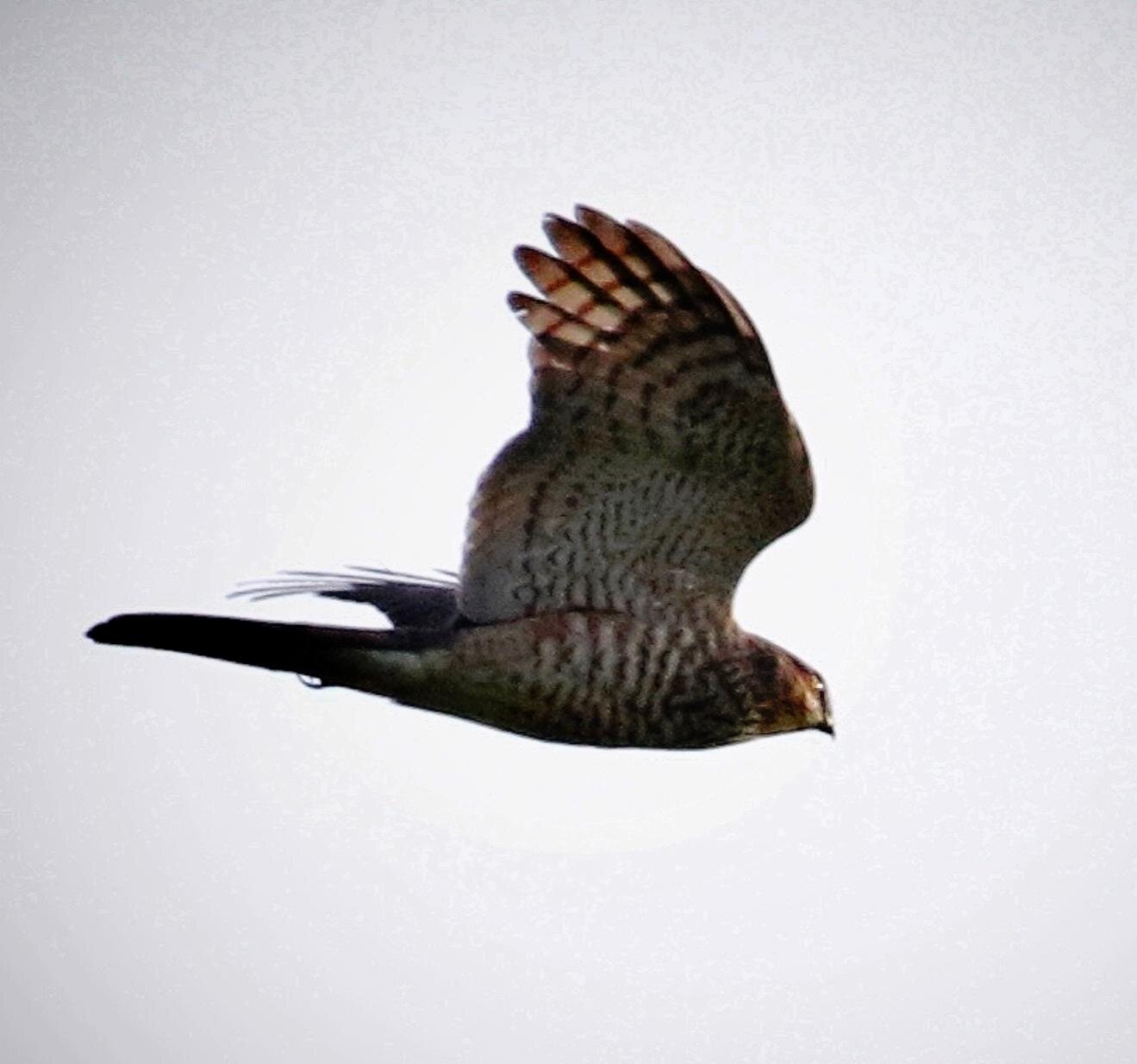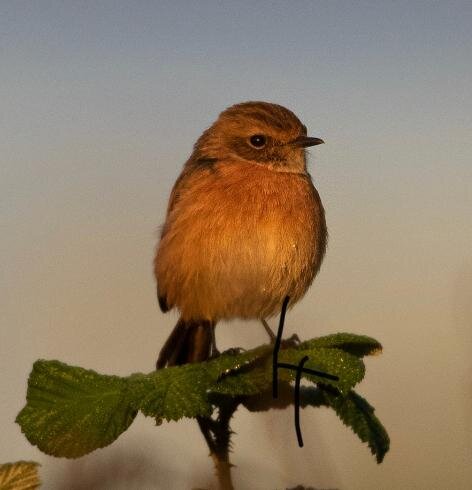Birds of the Scrubs: February 2021
all photos by Paul ThomasBarbara Crowther writes:
February on the Scrubs was perhaps most characterised by regular flocks of redwings passing through. We had more or less daily sightings of them, including a total of 60-70 in the northern woods on 14 February, whilst a large flock of 40-50 flew into the playing field edge of the meadow on 25 February. These most colourful of our thrushes will start to move on as Spring arrives, but have been a highlight of recent weeks.
What were our biggest excitements in February? Firstly, Paul Thomas managed to get some great shots of a peregrine falcon on Sunday 7 February - they have been known to perch on the local hospital incinerator tower, another theory is that it was one of the pair currently residing on the Trellick Tower in W11. Second was the arrival of a pair of stonechats, first spotted by Laura Williamson on 20th February, and then seen in various locations on posts in the grassland over the following four days. We've had overwintering stonechats every year for the past 10 or more years, according to Paul Thomas’ very reliable records, but these were the first we'd seen since last November. Perhaps increasing footfall and encroachment into the grasslands deterred any from staying this winter, and our pair have possibly already continued on their Spring migration. Thirdly, on 22 February, Magnus and Paul both spotted the first linnets of 2021, whilst Mags also picked up a single reed bunting and Paul managed to flush a common snipe near the grassland all on the same day. What a day!
We have seen the first chiffchaffs of 2021 - Laura spotted one on the embankment on 27 February, and another (or perhaps the same one?) was picked up by Paul the next day. Hopefully we’ll start to see and hear many more in March. Our resident kestrel continues to hover over the grassland on a regular basis, and meadow pipits were seen throughout February with their bouncing “pip-pip” flights in the area near the lateral path - a group of around 20 'mipits’ was sighted on 11 February, Four pied wagtails were picking around the flooded lower grasslands on 6 February, and another spotted on 22 February. On the very last day of February, a sparrowhawk whizzed low through the grassland sending a flock of around 24 redwing and a wood pigeon scattering.
February also heralded the reappearance of greenfinches, whose numbers steadily grew over the course of the month, their slightly scratchy monotone call can now be heard most mornings. The great spotted woodpeckers are often seen and heard on their favourite dead tree in the North West corner, as well as in both Braybrook and northern woods - definite signs of courting behaviour amongst them, and three were chasing each other in the NW corner on 23 February. Several sightings of jays, mostly along Lester’s embankment, but also one in the central copse.
It’s wonderful to hear more and more bird song on the Scrubs as the days get lighter - the dunnocks have joined the song thrushes in the early morning choruses - we find plenty in both the meadowland, in the woods near Chat’s Paddock and from trees along the embankment. The robins of course carried on singing all through winter, whilst wrens are also more regularly heard now, and starting to advertise their prolific nest building skills - let’s hope those made homeless by recent bramble clearance will find new territories now.
We obviously have thousands of raucous ring-necked parakeets, as well as multitudinous magpies and copious carrion crows vying to drown out the more sonorous birdsong. We hear the regular chatter of long-tailed tits which can be seen in many places from Martin Bell’s wood, along the northern woods, in Braybrook woods, the central copse and NW corner. Interesting fact: they are not actually members of the tit family, but a species all of their own. Meanwhile, the real tits - great tits and blue tits - are also heard and seen just about everywhere in the Scrubs and showing definite signs of nest building - last year a great tit even nested inside one of the striped model aircraft poles! We’re seeing small groups of house sparrows, chaffinches and goldfinches, and these numbers should now grow. The trees along the prison remain noisy with starlings at dusk. The playing fields regularly play host to over 100 black headed gulls, often with a few herring gulls mingling in, whilst no less than 10 lesser black backed gulls were amongst them on 24 February.
What to look for in March
There are still a few lingering winter redwings as March gets underway, but numbers will now dwindle. We hope to see more chiffchaffs arriving and perhaps the arrival of our first blackcaps of 2021, as well as more linnets. March is traditionally the month to start looking out for wheatears, and we could also see more migrating stonechats. More rare perhaps, but it has been in March that black redstarts have been spotted, and also in previous years a skylark or two. So keep eyes on the bushes and the trees and up to the sky, and let us know what you see!
If you’d like to join the ScrubHub, the WhatsApp group which is solely dedicated to bird sightings at Wormwood Scrubs, the link to join is https://chat.whatsapp.com/LwFtlsE8fJaLPlV4KF0S2X.It all begins with an idea. Maybe you want to launch a business. Maybe you want to turn a hobby into something more. Or maybe you have a creative project to share with the world. Whatever it is, the way you tell your story online can make all the difference.
Don’t worry about sounding professional. Sound like you. There are over 1.5 billion websites out there, but your story is what’s going to separate this one from the rest. If you read the words back and don’t hear your own voice in your head, that’s a good sign you still have more work to do.
Be clear, be confident and don’t overthink it. The beauty of your story is that it’s going to continue to evolve and your site can evolve with it. Your goal should be to make it feel right for right now. Later will take care of itself. It always does.



